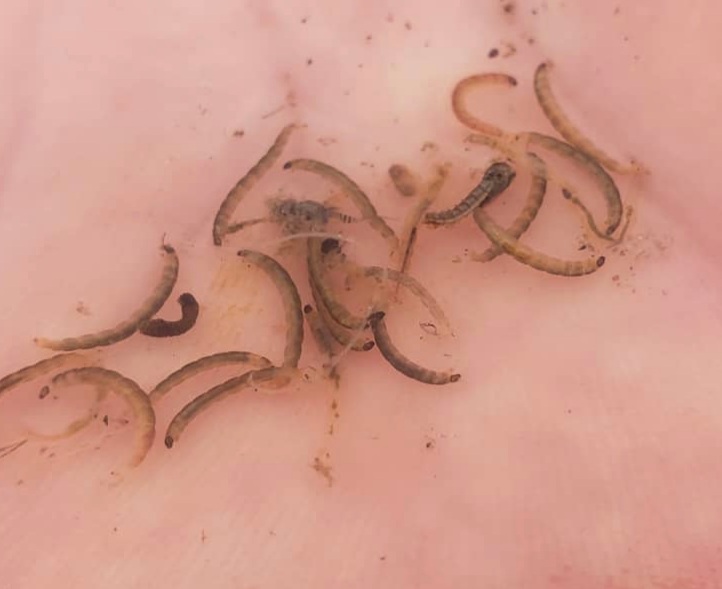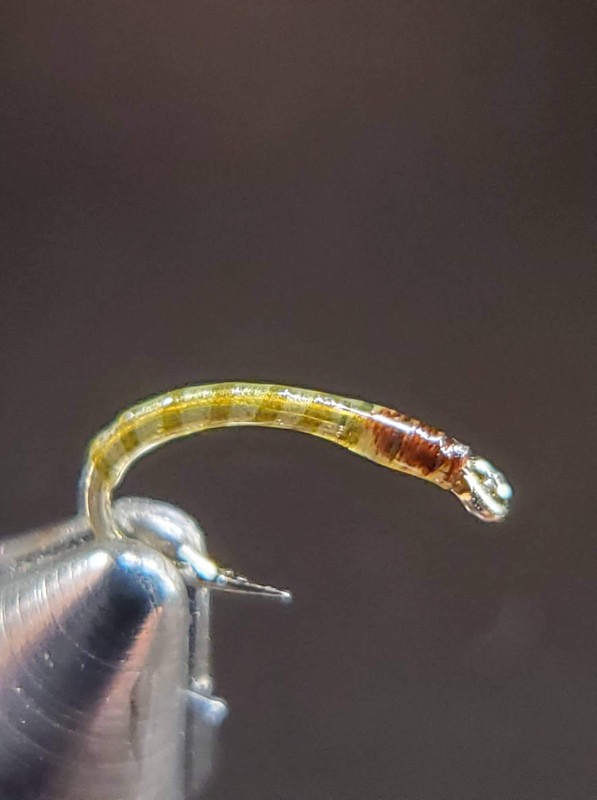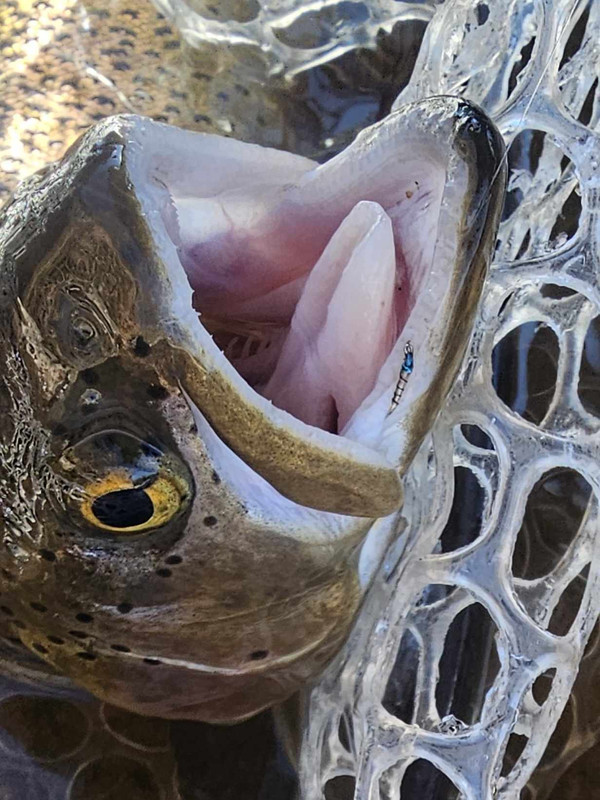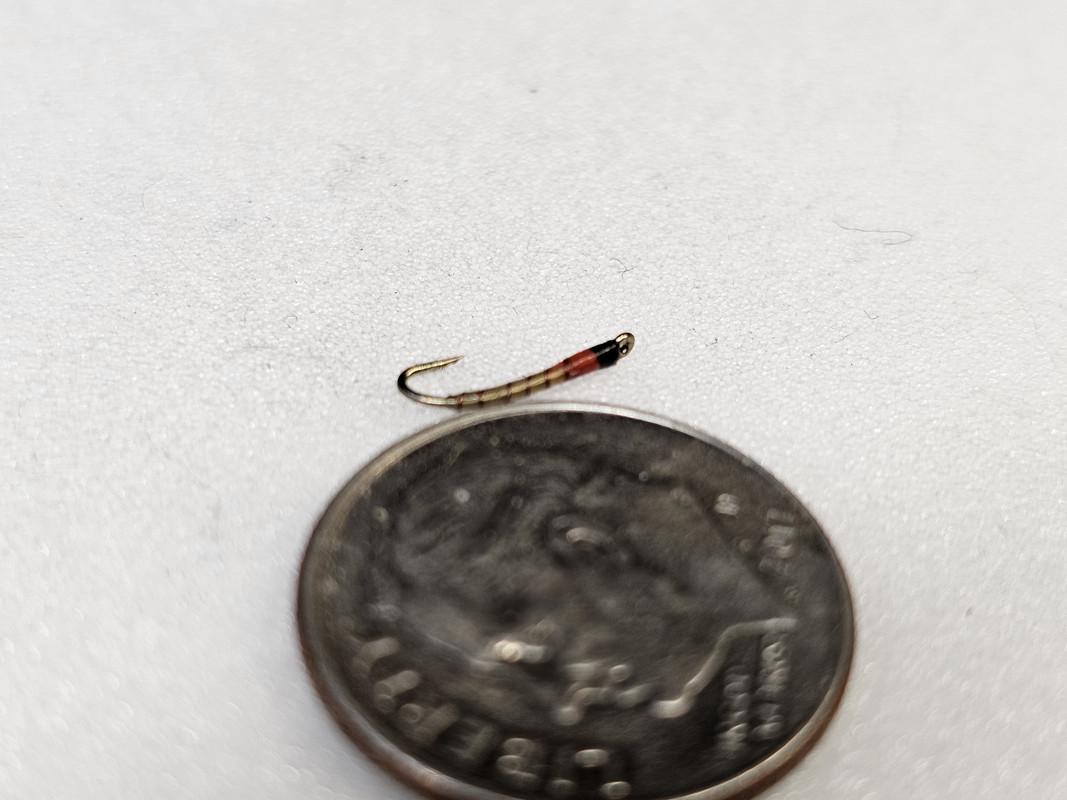Nymph hook
Thread
Hareline Midge Stretch
Collar can be Krystalflash or Perdigon body material

Moderators: William Anderson, letumgo
Hi Ron. Yes, the colorful larva are used mostly as attractors, although there are a few rivers that have a good population of "Blood Worms". The Blue River near Dillon Colorado being one of them.ronr wrote: ↑Mon Dec 04, 2023 11:27 am Wayne.. I'm interested to know whether you seine the river bottom to see the color of the nymphs. I've fished a couple times in different parts of Colorado, and that is the only place I've found blood midges. Here i've found cream and black of course, but not other colors.
I don't necessarily follow the exact match the hatch theory, but your colorful larva must be good attractors.









Great post - you had me at “throat pump”…… I still use one quite frequently. It has saved the day for me many many times. On countless occasions I’ve been fishing during multiple hatches, and thought the fish were feeding on one thing, but they were really feeding on something else!DUBBN wrote: ↑Tue Dec 05, 2023 3:04 amHi Ron. Yes, the colorful larva are used mostly as attractors, although there are a few rivers that have a good population of "Blood Worms". The Blue River near Dillon Colorado being one of them.ronr wrote: ↑Mon Dec 04, 2023 11:27 am Wayne.. I'm interested to know whether you seine the river bottom to see the color of the nymphs. I've fished a couple times in different parts of Colorado, and that is the only place I've found blood midges. Here i've found cream and black of course, but not other colors.
I don't necessarily follow the exact match the hatch theory, but your colorful larva must be good attractors.
I do not sein, I use a throat pump on 12 to 14 inch Brown trout when I happen to catch them. Which is most of the time as of late.
Some of the midge patterns I use are river specific. For example on the lower Gunnison and Colorado rivers this simple light Olive midge produces the most fish for me from November in to early March. I will fish other midge larva and emerger patterns with it, in different sizes and colors, but at the end of the season this midge produces over 75% of my trout on those rivers. I use this pattern in sizes 20 to 16.
I keep tabs on the San Juan River and what guides are tying there to imitate midge larva and pupa. Adding a little bling has become fashionable. Here is the popular Bling Midge. I took the idea and went a step farther. I have been experimenting with different colors. So far a light Blue Perdigon body is my favorite. Copper is a distant second. I have also been adding a light Blue wire as a rib to a few patterns, and adding Blue Krstalflash as a wing to some midge emergers.
Not a bling midge but a larva with a hot spot is one a buddy and I came up with called the Tequila Sunrise. Quite often when I sample the throat contents of fish on Roaring Fork River, olive or light brown midge larva have a spot of red somewhere on their body. It may be their tail, midsection, or head. This pattern was developed from that observation.
I use Semperfli Nano Silk, Red (30 denier). It is so thin it barely adds any bulk, and makes a nice red spot.
I rarely use UV resins anymore as I developed such a horrible reaction to it. I use it a few times a year now on a couple patterns that I have fallen in love with. Like the Tequila Sunrise. Someday I will post the photos of what it takes to set up to use it, and the protective gear I have to wear. Dumb I know, just like trying to add bling and hot spots to size 22 - 16 patterns. Dumb, but avenues I enjoy pursuing to catch trout, and tie flies.
Sorry about the ramble, Ron. I have a little insomnia going on.